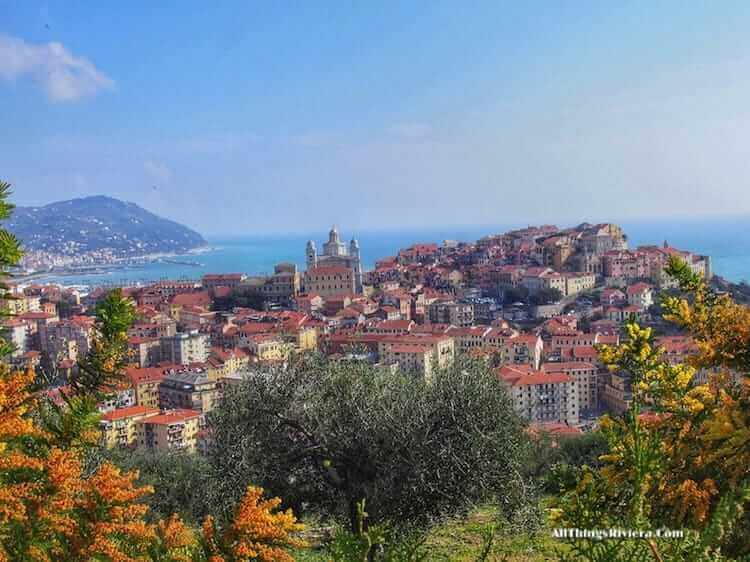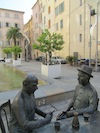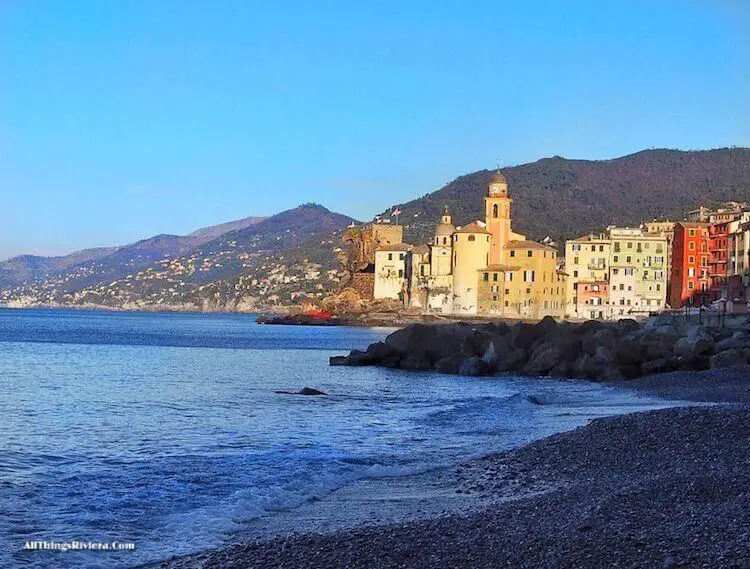How many forests must a man walk down before you can call him a hiker? I have no idea.
But here is something I do know. Long before you have reached even half that figure, you will have experienced a case of “hikers’ dejà vu”: the feeling that you have walked down the same forest-dash-coast – or a forest-dash-coast very much like it – some time ago in the past.
Hiking, after all, like baking, works with a limited number of ingredients, and it is inevitable that, in due course, the same flavours keep on returning.
It is equally inevitable that this familiarity breeds disenchantment. Personally, I am not easy to disenchant. I never regretted going on a hike, during or afterwards, thinking: if only I had stayed home and watched kitten videos on the Internet!
What has happened occasionally, however, is that I have thought: all this time that we spent (and sometimes not trifling sums of money, too) to come here for this walk among trees – would it not have been more convenient to search for a forest nearer home?
All the more should we celebrate hikes that are genuinely different and unique, hikes that pack a punch which you can feel even if you have completed dozens of forest-dash-coastal walks before.
Something like the Brodten Cliff on the German coast of the Baltic Sea.

The Cliffs are Alive in Travemünde!
The Brodtener Steilufer at Travemünde near Lübeck is described in the literature as a “living cliff”. What this means is that, at any time, a piece of the high coastline can crumble off, and one of the trees that appear to hang on for their dear lives on the thin crust of soil that lies on top of the sand and the rock …

… comes crashing down. Life on the edge indeed.
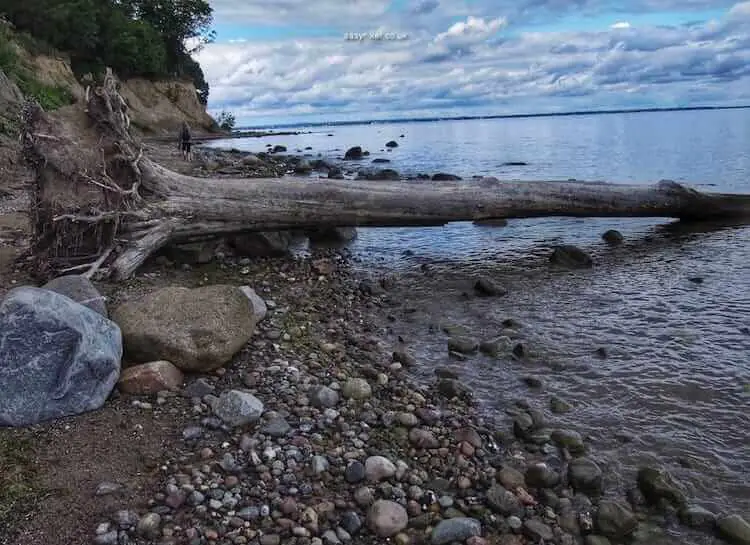
And it is not only trees that are at risk. The Haus Seeblick Youth Holiday Centre up on the ridge may look idyllic.
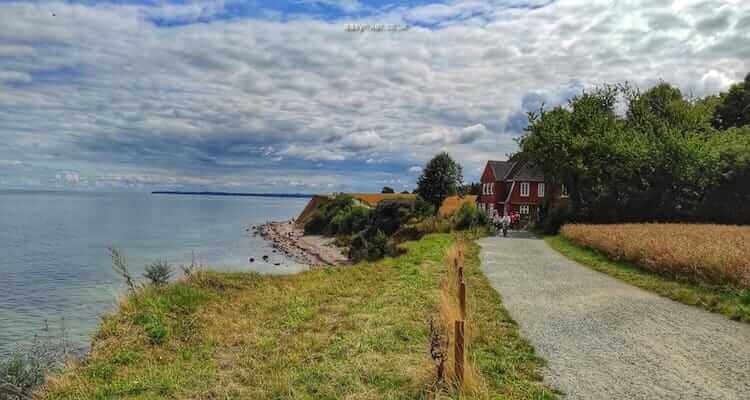
But a little further down the trail, the truth about the idyllic scenery is revealed. The cliffs are alive in Travemünde with the sound of death: of trees, of plants, but also of human livelihoods.
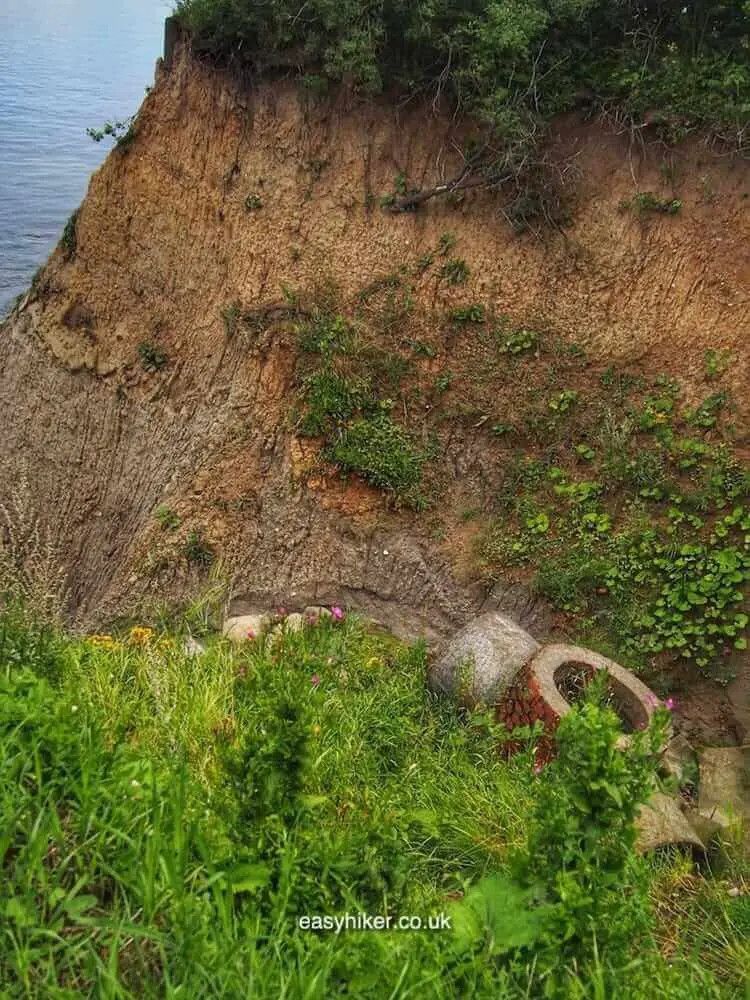
Clearly, a house once stood where all that remains now is a gaping hole – and a piece of domestic infrastructure too heavy to remove.
The Brodten Cliff can lose one full metre of land in bad years, and Haus Seeblick’s owners – a socialist youth organization – are already actively searching an alternative accommodation for their budding revolutionaries.
Two things are eroding the cliff: heavy winter rains which soak and soften the underground, reducing the grip that the plants can have on the land, but also high waves on stormy days.
Hiking the cliff in the driving rain may be inconvenient, but doing so on stormy days is positively dangerous.
It should go without saying that you can only walk by the beach on days when the sea is calm.
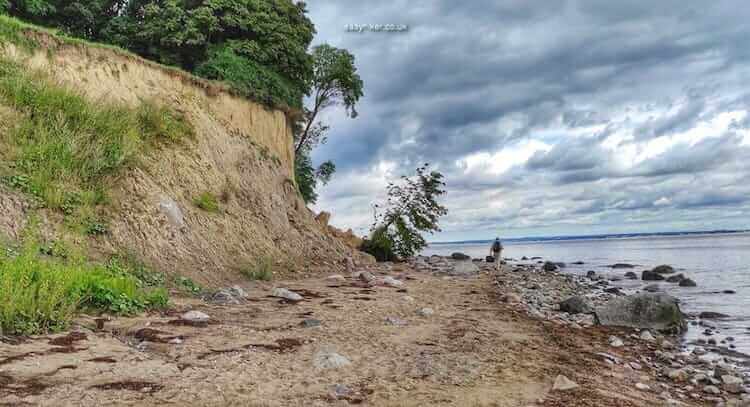
But if the winds blow hard on the day of your trip to Travemünde, do not despair: there is an all-weather alternative route higher up on the ridge, which sometimes runs 2 to 3 metres above the coast, sometimes as many as 20 metres.
This route is pretty and scenic at times, offering views and experiences that the parallel trail on the beach does not, and it is – not only due to the presence of many cyclists who cannot use the “Low Road” – the busier of the two routes.
But be aware that there is no way of switching freely from one trail to the other. The two routes start and end in the same places, but there are no interchanges along the way. So whichever of the two options you choose, you are stuck with it for one full leg of the hike.
The views across the sea may be better from the top of the cliff, there is more variety in the landscape around you, and you can recharge your batteries at a cafe-restaurant around the halfway mark of the trail.
But the coast is where the great theatrical spectacle of the cliff unfolds, and the “High Road” on the ridge can only offer you the perspective of the cheapest seats in the house, somewhere in Row Z underneath the rafters.
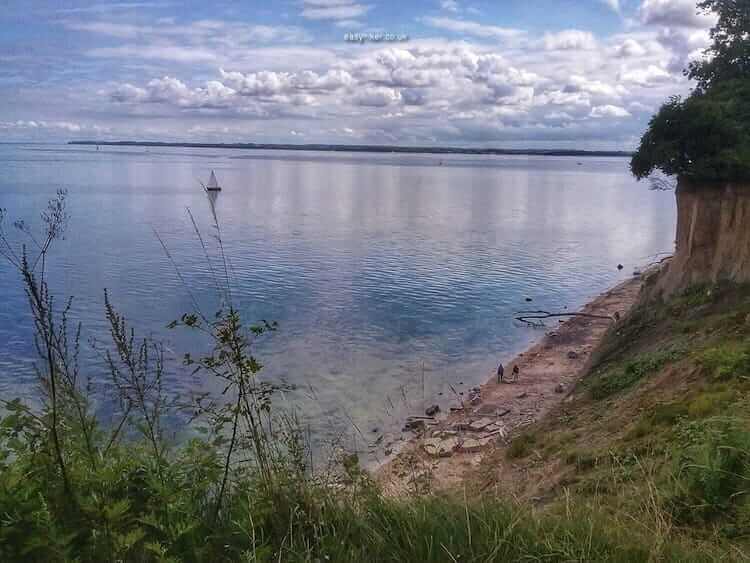
At any rate, on calm days at least, there is no necessity to choose one or the other: you can combine the two, going first for the drama of the living and dying cliff (“Cliff and Let Die”) and then returning on the scenic route.
So here is what we suggest you do: take one of the frequents train from Lübeck to Travemünde Strandbahnhof (Lübeck-Travemünde Strand, not Hafen), walk the short distance to the beach and then turn left, past the colourful beach chairs on your right …
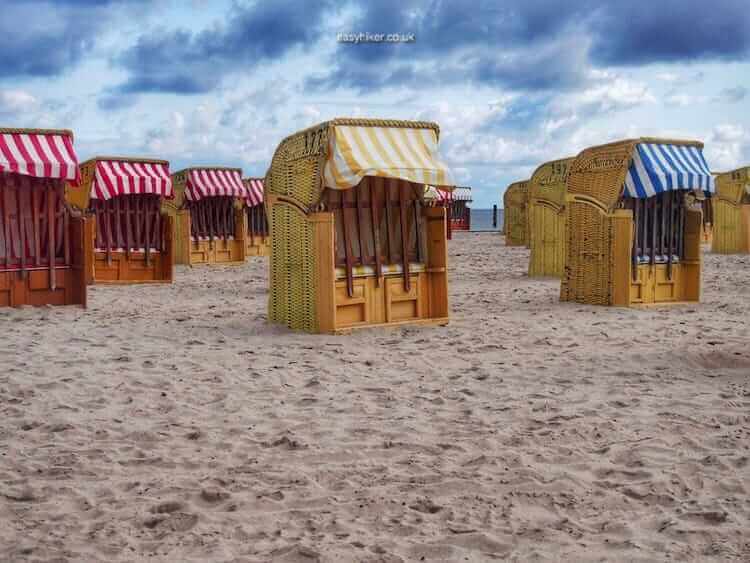
… and imposing 19th century villas on your left.
Travemünde was once a fancy resort, the Monte Carlo of the Baltic Sea. Many families from the Hanseatic high society regularly spent their summers here, among them the family of the writer Thomas Mann – there is a lot about Travemünde in his novel The Buddenbrooks.
The fanciest building on the sea shore is the Villa Mare, built as a holiday home for the German Emperor Wilhelm II, known across the Anglo-Saxon world as Kaiser Bill.
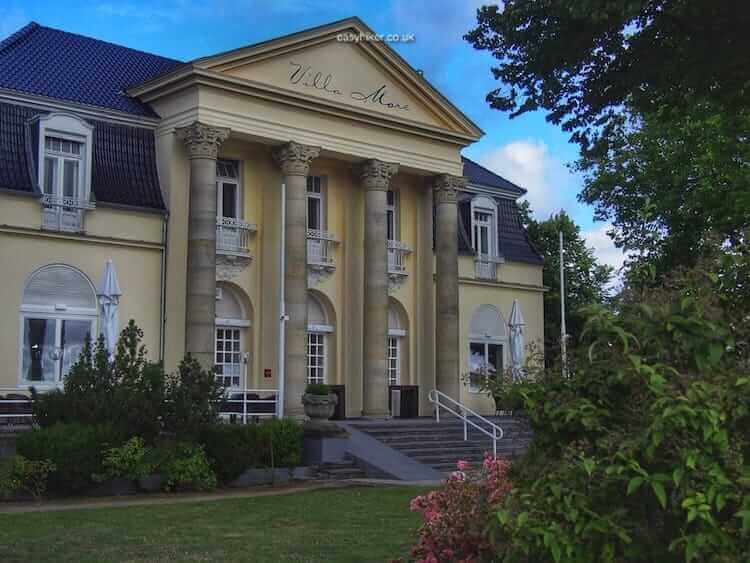
Follow the trail out of town and, where it forks, remain on the Low Road by the beach rather than walking up the path which branches off and up on your left.
When you reach the nudist beach, you will know that you are on the right way. (Don’t worry: there is no need to strip, you are allowed to pass through fully clothed. Just keep your eyes glued firmly to the horizon and ignore any of the dangly bits on your left and right.)
Most of the drama on the 5 km long trail is concentrated in its first half. After the Hermannshöhe, the highest point of the cliff, the ridge flattens somewhat, and you will see no more trees lying on the beach – or standing on the high coastline either. (Maybe this is because they have all crashed down a long time ago?)
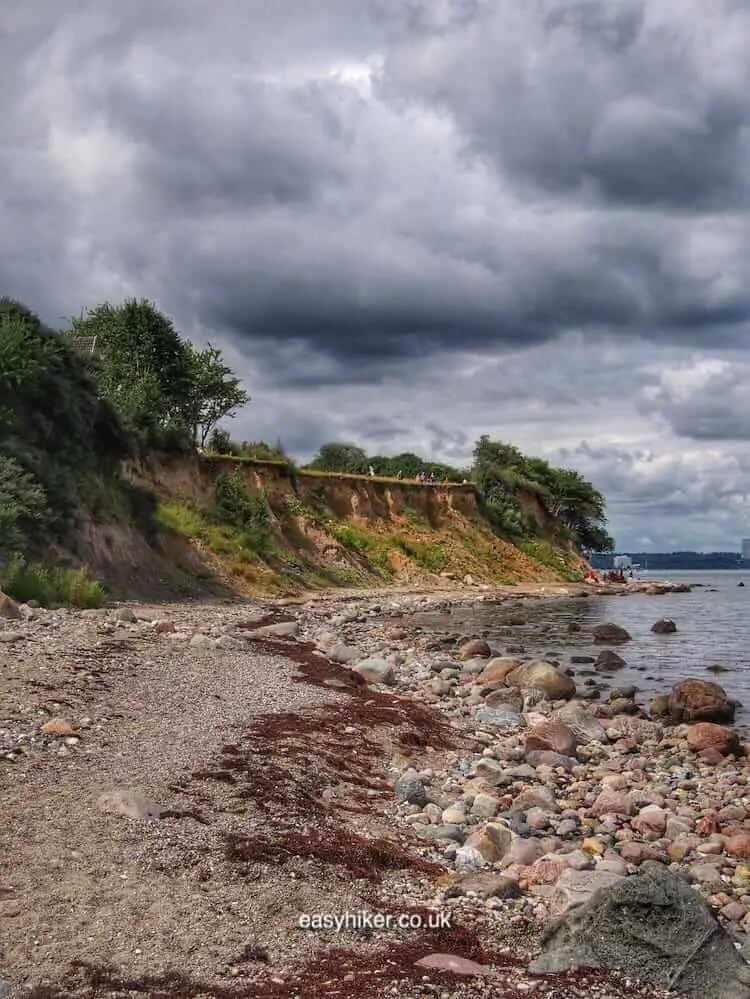
When you first spot Haus Seeblick …
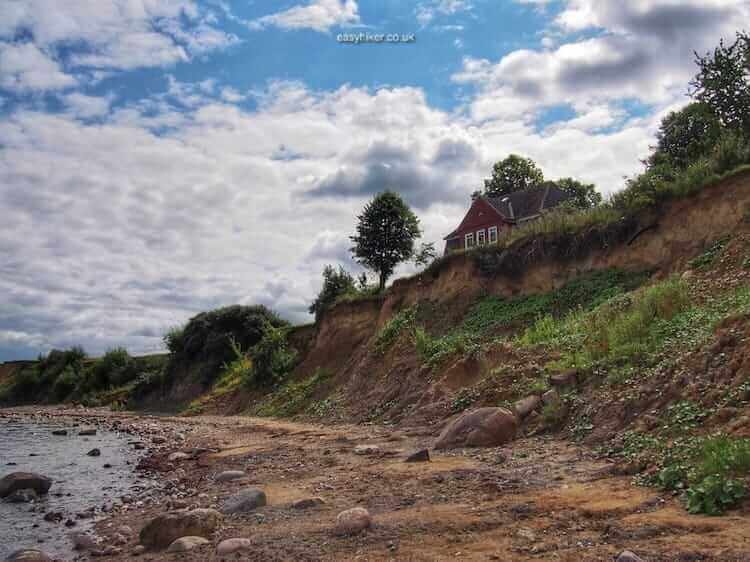
… you should start to look out for the wooden stairway that will soon lead you up to the top of the ridge.
Turn left on the high trail, walking past scenic views of the Baltic Sea …
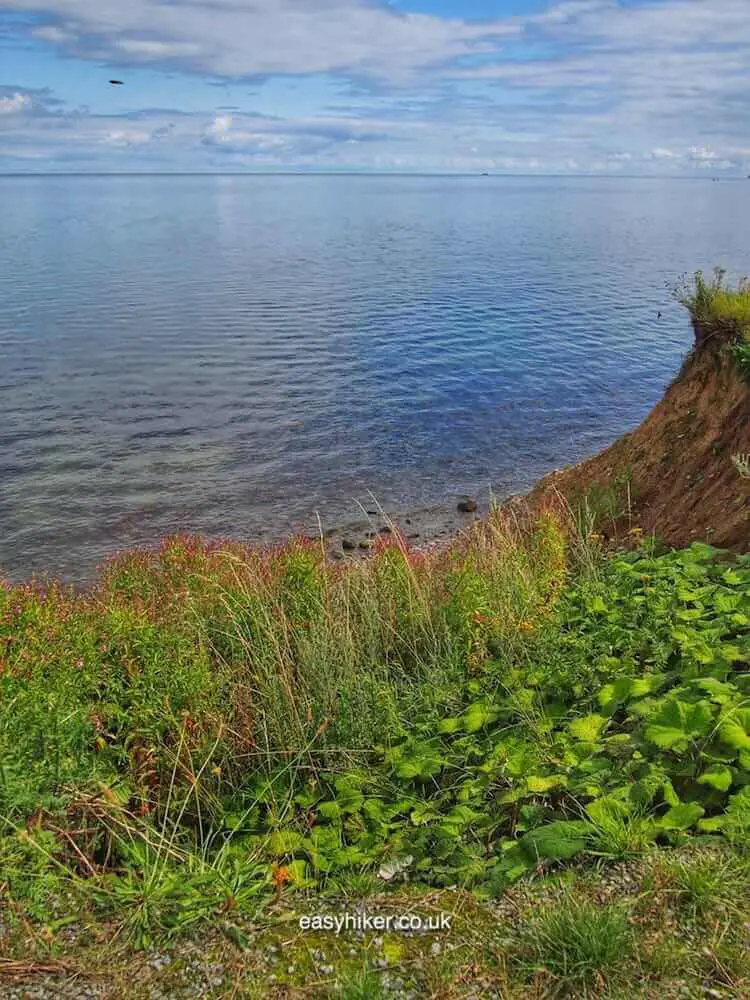
… and through the Hermannshöhe woods …

… back to Travemünde Strandbahnhof.
And if you have failed to plan your return by studying the train schedules: help is at hand.
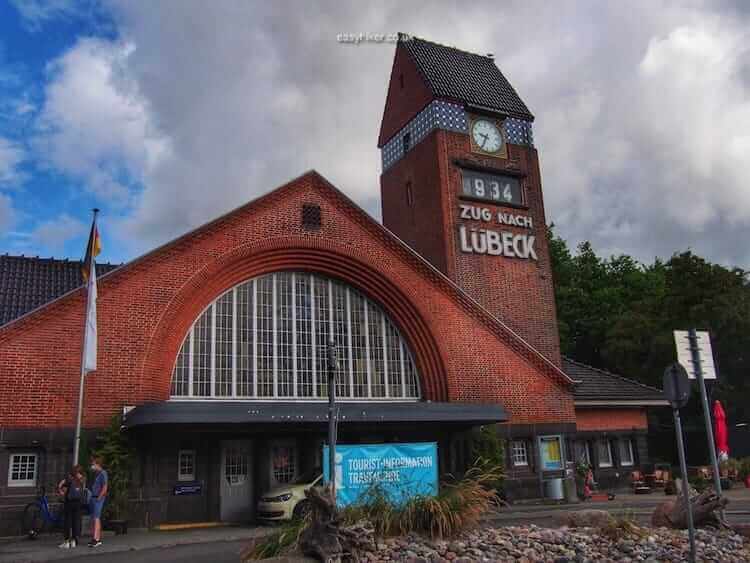
The digital station clock always displays the departure time of the next train to Lübeck.
The Brodten Cliff may be wild and uncontrollable, but travels on the German rail network most definitely are not.


